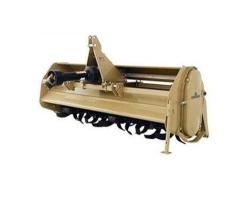One of the most useful lawn maintenance tools in the spring is the tiller. Those of you who plant gardens or are in the process of planting a lawn are sure to use this indispensable tool, and there are some maintenance tips that you need to keep in mind. In this post, we go over some considerations you need to have with regard to selecting a tiller and keeping it in good shape.
When deciding on which tiller to buy, you need to be mindful of not only the size and structure of your lawn but also the type of soil that you have. Essentially, if you have firm, rocky (and therefore, more difficult) soil, you need a larger and more powerful tiller. Meanwhile, if you have a relatively small lawn and your soil is damper and less dense, you really don’t need to spring for anything more powerful than a small tiller. There is a pretty substantial difference between small and large tillers, not only with regard to price but also in performance. Small tillers generally run between 1-5 horsepower, while larger tiller can go between 5-12 horsepower. The higher the horsepower, the easier it is for the tiller to really dig deep and cultivate the soil. However, larger tillers can be very cumbersome and difficult to operate.
One factor you need to weigh is whether you want the tines (blades) in the front or in the rear. Tillers with tines in the front tend to be less powerful and run manually, while tillers with tines in the rear are more powerful and are gear-operated. One of the advantages to having tines in the rear is that these tillers generally have a reverse gear. However, if you have a small lawn with toil that isn’t especially dense, you will be fine with a smaller tiller with tines in the front.
In order to keep your tiller running smoothly, you should change the oil regularly and change oil filters after each year. Lastly, this tip may not be of much use this time of year, but at the beginning of winter make sure that the gas tank is dry before storing it; if not, purchase a fuel stabilizer.







